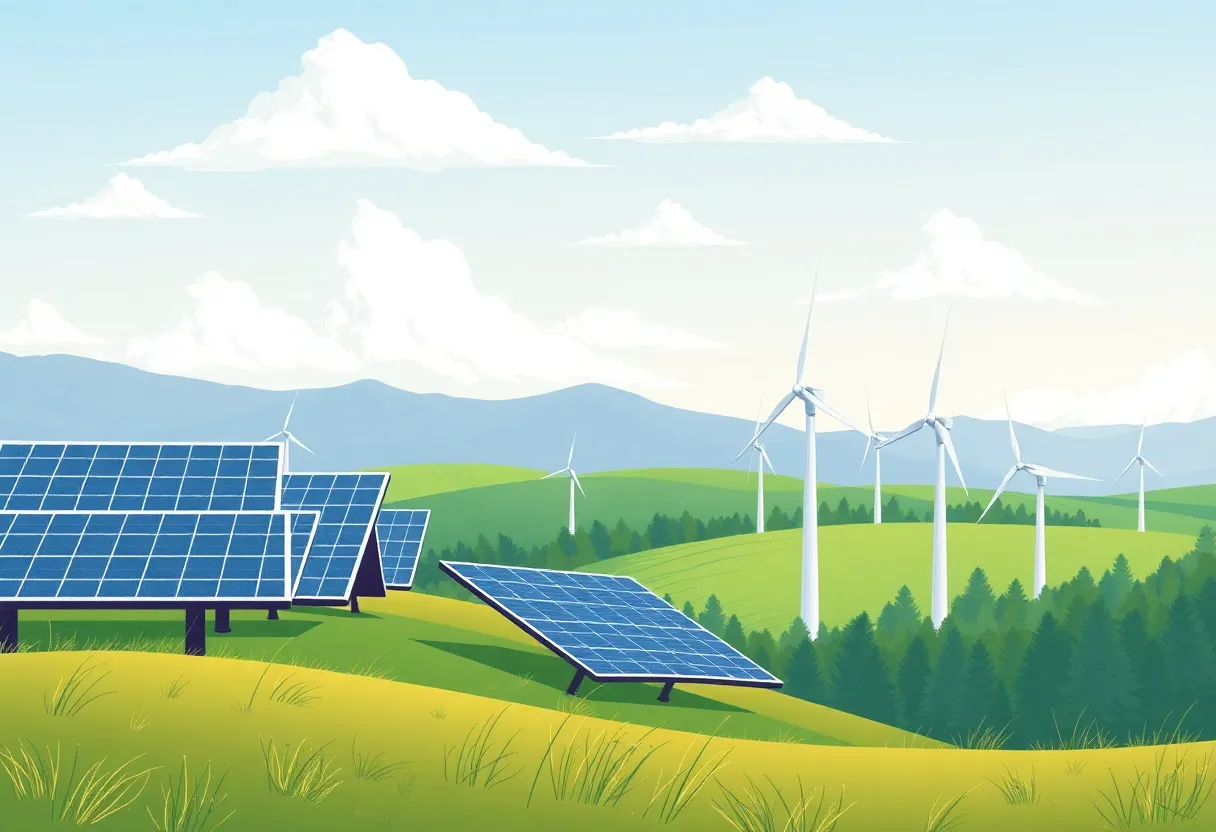News Summary
Governor Josh Shapiro of Pennsylvania has raised significant concerns about proposed cuts to clean energy tax credits, which he warns could lead to severe job losses and investment risks. In a letter to the state’s congressional delegation, Shapiro highlighted the potential loss of over 26,000 jobs and $3 billion in investments in the energy sector by 2030. The proposed legislation could also jeopardize community energy programs and undermine ongoing initiatives promoting clean energy adoption, including the pivotal Crane Clean Energy Center, which is set to restart in 2027 with substantial job creation potential.
Pennsylvania Governor Raises Alarm Over Clean Energy Tax Credit Cuts
Potential Job Losses and Investment Risks
Governor Josh Shapiro of Pennsylvania has expressed his deep concerns regarding the proposed elimination of clean energy tax credits, warning that such a move could lead to significant job losses and jeopardize billions in investment in energy projects across the state. In a letter addressed to the state’s congressional delegation, Shapiro highlighted the potential fallout from these actions, specifically noting that the proposed policy changes could undermine over $3 billion in direct investments in Pennsylvania’s energy sector.
Impact on Jobs and Clean Energy Projects
The proposed tax credit eliminations are part of H.R. 1, a budget bill that aligns with several domestic policy priorities from the Trump administration. If passed, the cuts could threaten over 26,000 jobs by the year 2030 due to the effective tax increases associated with the legislation. The House version of H.R. 1 plans to eliminate most clean energy tax credits abruptly, rather than allowing them to phase out naturally by 2032. Similarly, more than 70 energy facilities throughout Pennsylvania stand to be considerably affected by these tax increases.
In contrast, the Senate version of the bill proposes a more gradual phase-out of tax credits for wind and solar projects commencing in 2026 and 2027. It also considers extending certain tax credits for nuclear, hydropower, battery, and geothermal projects until 2034, a change the Governor has praised. Projects in Clearfield County, which are anticipated to generate over 900 jobs, could also experience adverse effects due to these proposed changes.
Community Energy Programs at Risk
Further compounding the possible fallout, the bill may effectively eliminate state programs that have been instrumental in helping community institutions lower their energy costs. Among these, the Solar for Schools program could face losses exceeding $30 million, directly jeopardizing initiatives that promote clean energy adoption in educational institutions. Consumer-focused tax credits for electric vehicles, home energy efficiency improvements, and other clean energy projects are also at risk of being eliminated under the proposed budget.
The Crane Clean Energy Center and Future Prospects
During a gathering attended by over 400 employees from Constellation and local building trades members, Governor Shapiro discussed the significant progress made in preparing the Crane Clean Energy Center for restart. Contingent on the approval of an interconnection request by PJM, the regional grid operator, the center could be back online as early as 2027.
Constellation has enhanced its hiring efforts, training reactor operators, and procuring necessary equipment as preparations for the plant’s restart continue. The Governor has been actively collaborating with Constellation and PJM to expedite the new generation’s rollout and ensure the grid’s reliability upon restart. The facility’s reopening is expected to create thousands of job opportunities and contribute to economic benefits for Pennsylvania families and businesses.
Furthermore, Microsoft has made a historic investment in this clean energy project, aiming to provide reliable, carbon-free electricity back to the PJM power grid, in line with its commitment to become a carbon-negative company by 2030. The investment from Constellation to restart the Crane Clean Energy Center is estimated at $1.6 billion. Currently, the facility is staffed at over 64%, employing nearly 400 full-time workers with plans to increase workforce numbers in the coming weeks.
Context on Pennsylvania’s Energy Landscape
Amid these developments, Pennsylvania ranks near the bottom nationally for advancements in new wind, solar, and geothermal energy sources, according to a recent report. In response to these challenges, a legislative proposal known as the Pennsylvania Reliable Energy Sustainability Standard (PRESS) is on the table. This initiative aims to mandate electricity providers in Pennsylvania to derive at least 35% of their energy from renewable sources by 2035, signifying a potential shift towards a more sustainable energy future amidst ongoing debates around clean energy policy.
Deeper Dive: News & Info About This Topic
- Constellation Energy News
- Delco Times Opinion
- Post-Gazette Business News
- City & State PA Policy
- PennLive News
- Wikipedia: Clean Energy
- Google Search: Clean Energy Policy Pennsylvania
- Google Scholar: Pennsylvania Clean Energy
- Encyclopedia Britannica: Renewable Energy
- Google News: Pennsylvania Clean Energy News

Author: STAFF HERE PHILADELPHIA WRITER
The PHILADELPHIA STAFF WRITER represents the experienced team at HEREPhiladelphia.com, your go-to source for actionable local news and information in Philadelphia, Philadelphia County, and beyond. Specializing in "news you can use," we cover essential topics like product reviews for personal and business needs, local business directories, politics, real estate trends, neighborhood insights, and state news affecting the area—with deep expertise drawn from years of dedicated reporting and strong community input, including local press releases and business updates. We deliver top reporting on high-value events such as Mummers Parade, Philadelphia Flower Show, and Thanksgiving Day Parade. Our coverage extends to key organizations like the Greater Philadelphia Chamber of Commerce and United Way of Greater Philadelphia, plus leading businesses in telecommunications, food services, and healthcare that power the local economy such as Comcast, Aramark, and Children's Hospital of Philadelphia. As part of the broader HERE network, we provide comprehensive, credible insights into Pennsylvania's dynamic landscape.





